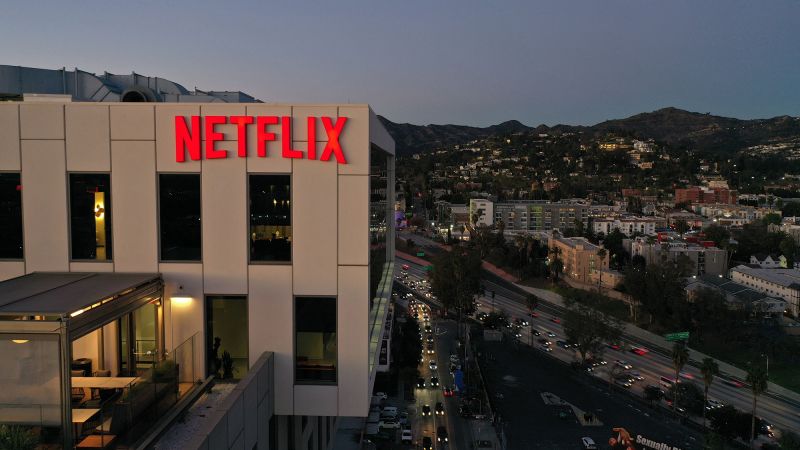Netflix, the dominant player in streaming, is expected to announce its first-quarter results on Thursday after enjoying months as a Wall Street darling.
But much of the company’s past growth and success, analysts say, has come from its old, well-established business model. In recent months, Netflix has made moves to expand and even radically reinvent that business.
While streaming competitors like Disney+, Hulu, Max (owned by CNN’s parent company Warner Bros. Discovery) and Peacock work to draw in subscribers with original programming, Netflix has made big bets lately in live sports, video games, and in deals to license other providers’ content — all while transitioning from an advertising-free subscription service to a full-blown ad-supported juggernaut.
Last year, Netflix made a particularly risky bet by pushing users who share passwords to create their own accounts — but that paid off. In January, the company announced it had a record number of subscribers. The stock is up 31% so far this year, outperforming its competitors.
However, the boost from Netflix’s password crackdown is likely fading into the rearview mirror.
“Netflix’s lead in the streaming wars is well established. But it is unlikely to repeat the huge subscriber additions it witnessed last quarter as password-sharing boosts recede,” said senior analyst Ross Benes from eMarketer.
Instead, Thursday’s earnings may shed light on whether Netflix’s reinvention will be successful.
For Netflix, last month’s Oscars were a disappointment: Though the streaming service led its rivals in nominations, it took home just one award, for best live-action short film. Going forward, the company seems to be moving away from what it was known for: spending its money on developing the big-budget films and TV shows able to win those awards.
In recent months, after “Suits” exploded in popularity on the platform, Netflix has indicated that it plans to license more content from other studios. New generations are rediscovering iconic shows from the 90s and the early aughts, like “Seinfeld” and “Sex and the City” after they show up on Netflix’s platform.
“They’re getting tons of viewership on both original content and licensed content,” Alicia Reese, an equity analyst who covers Netflix for Wedbush Securities, said. “It’s productive and it’s cheaper for them.”
Netflix has also expanded into live and sports programming this year, encroaching on traditional TV’s domain. In February, Netflix aired its first-ever awards show, the Screen Actors’ Guild Awards, and announced a 10-year deal to air “WWE Raw” live, valued at more than $5 billion.
In the fight for eyeballs, Netflix has gotten creative, partnering with Rockstar Games’ “Grand Theft Auto,” the wildly popular action-adventure video game franchise, to further push into the video game space.
“We’re stoked by the performance of GTA,” Netflix co-CEO Greg Peters said in January. “We were in the top mobile game downloads for several weeks, which shows it was not only big for us, but big numbers for mobile gaming in general.”
Reese has faith in Netflix’s new direction.
“Netflix has that winning formula right now,” she said. “They have a lot of content of various types that keep people using the service at various price points.”
Reese said she believes Netflix also has other avenues of growth including the company’s newer advertising-supported subscription tier.

The ad tier, which costs $6.99 per month in the United States, significantly less than Netflix’s other subscription plans, has seen explosive growth since it was introduced in late 2022, according to the company. In January, Netflix’s president of advertising, Amy Reinhard, shared that Netflix’s ad-tier had more than 23 million users.
Reese said Netflix’s future growth could hinge on its success in the advertising space.
“I’m hoping they give a little bit more detail on their advertising tier,” Reese said of what she’s watching for in Thursday’s earnings report.
In January, Peters said the company aimed to snatch more ad dollars from traditional TV competitors.
“We know ad dollars follow engagement. We’ve got the most engaged audience so we believe we’re well positioned to capture some of that ad spend that shifts from linear to streaming,” he said.
Read the full article here




